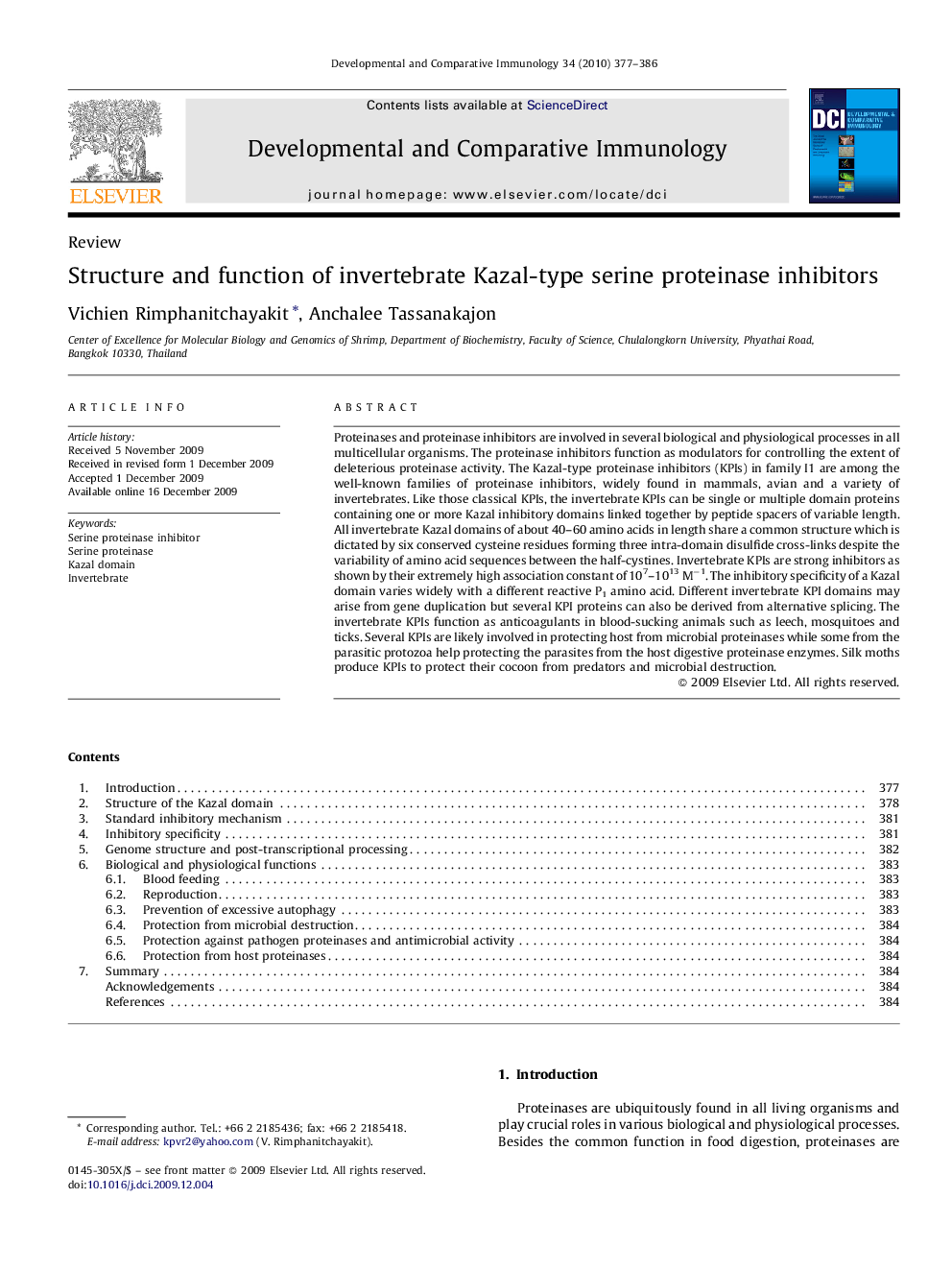| کد مقاله | کد نشریه | سال انتشار | مقاله انگلیسی | نسخه تمام متن |
|---|---|---|---|---|
| 2430144 | 1106546 | 2010 | 10 صفحه PDF | دانلود رایگان |

Proteinases and proteinase inhibitors are involved in several biological and physiological processes in all multicellular organisms. The proteinase inhibitors function as modulators for controlling the extent of deleterious proteinase activity. The Kazal-type proteinase inhibitors (KPIs) in family I1 are among the well-known families of proteinase inhibitors, widely found in mammals, avian and a variety of invertebrates. Like those classical KPIs, the invertebrate KPIs can be single or multiple domain proteins containing one or more Kazal inhibitory domains linked together by peptide spacers of variable length. All invertebrate Kazal domains of about 40–60 amino acids in length share a common structure which is dictated by six conserved cysteine residues forming three intra-domain disulfide cross-links despite the variability of amino acid sequences between the half-cystines. Invertebrate KPIs are strong inhibitors as shown by their extremely high association constant of 107–1013 M−1. The inhibitory specificity of a Kazal domain varies widely with a different reactive P1 amino acid. Different invertebrate KPI domains may arise from gene duplication but several KPI proteins can also be derived from alternative splicing. The invertebrate KPIs function as anticoagulants in blood-sucking animals such as leech, mosquitoes and ticks. Several KPIs are likely involved in protecting host from microbial proteinases while some from the parasitic protozoa help protecting the parasites from the host digestive proteinase enzymes. Silk moths produce KPIs to protect their cocoon from predators and microbial destruction.
Journal: Developmental & Comparative Immunology - Volume 34, Issue 4, April 2010, Pages 377–386